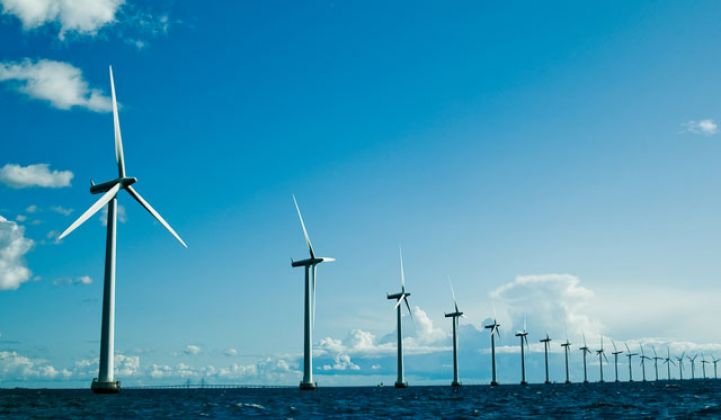Norwegian state-owned oil company Statoil is the winning bidder for the right to build a wind farm across nearly 80,000 acres off the coast of New York.
The U.S. Department of the Interior's Bureau of Ocean Energy Management’s auction was for an area approximately 12 miles off the west end of Long Island, which should be able to accommodate up to about 800 megawatts of wind power. A wind farm that size would rival some of the largest offshore wind farms in Europe.
There were approximately a dozen bidders that were qualified to bid, but only six took part in the auction. The bidding went through 33 rounds before Statoil ultimately emerged victorious.
Statoil’s bid of $42.5 million is hardly the final price tag, as the Norwegian company still needs to go through various environmental and feasibility studies, as well as to find an offtaker for the power it will eventually produce.
The other bidder in the final rounds was the New York State Energy Research and Development Authority. NYSERDA hoped to lower the cost by winning the acreage and then bundling that with an offtake agreement. But Statoil’s win suggests that an individual developer thinks it can do it for cheaper than buying the bundled package from the government. NYSERDA’s approach was similar to how many offshore wind auctions work in Europe.
No matter the approach, the project will certainly be more expensive than similar ones in Europe, which has about 11 gigawatts of offshore wind. NYSERDA will also still be heavily involved, providing assistance with studies and permitting. Just last week, NYSERDA put out an RFP for expert consultants as the state finalizes its offshore wind master plan.
“We are excited to have submitted the most competitive bid in a highly attractive project, Statoil’s first offshore wind lease in the U.S.,” Irene Rummelhoff, Statoil´s executive vice president for New Energy Solutions, said in a statement. “We now look forward to working with New York’s state agencies and contributing to New York meeting its future energy needs by applying our offshore experience and engineering expertise.”
That expertise draws on Statoil’s growing interest in offshore wind and long history in offshore oil and gas. It is a joint developer for a handful of wind farms off of the coast of the U.K., and is developing a floating offshore wind farm that will also be paired with energy storage.
One of the U.K. projects is Dogger Bank Wind Farm, which is more than 100 miles offshore of Yorkshire and is expected to have a target installed capacity of at least 7 gigawatts of wind power, and potentially up to 13 gigawatts.
Although NYSERDA will not lead the project, it will be critical for getting buy-in from local communities, especially the fishing community.
“NYSERDA will continue to work closely with coastal community members, the fishing and maritime industries and advocates to identify additional offshore wind energy sites to be included in New York’s Offshore Wind Master Plan," the agency said in a statement.
Enthusiasm and acceptance for the project is critical not only for Statoil and New York state, but also for the larger offshore wind industry in the U.S. Europe has gigawatts of offshore wind and some of those projects are now coming in at well under $100 per megawatt-hour. By comparison, the U.S. has only a single offshore wind farm off of Rhode Island, which is delivering 30 megawatts of power to Block Island.
New York, Massachusetts and other states, however, are getting more serious about offshore wind. Massachusetts has a goal of 1.6 gigawatts of offshore wind in the next decade and New York has a goal of getting half of its electricity from clean generation sources by 2030.
To get there, the U.S. offshore wind industry will have to scale up quickly from virtually nothing. It will require larger projects and more support from state governments for permitting. But with lessons learned from Europe, many in the industry feel the time is finally right for offshore wind to become a viable market in the U.S.
“Over the past decade, there has been consistent progress toward the realization of offshore wind power’s potential in America,” Nancy Sopko, the manager for advocacy and federal legislative affairs at the American Wind Energy Association, said in a statement. She added that the construction of the New York project alone could produce thousands of jobs.
Statoil said the project will be a phased development, with the first phase delivering 400 to 600 megawatts.



